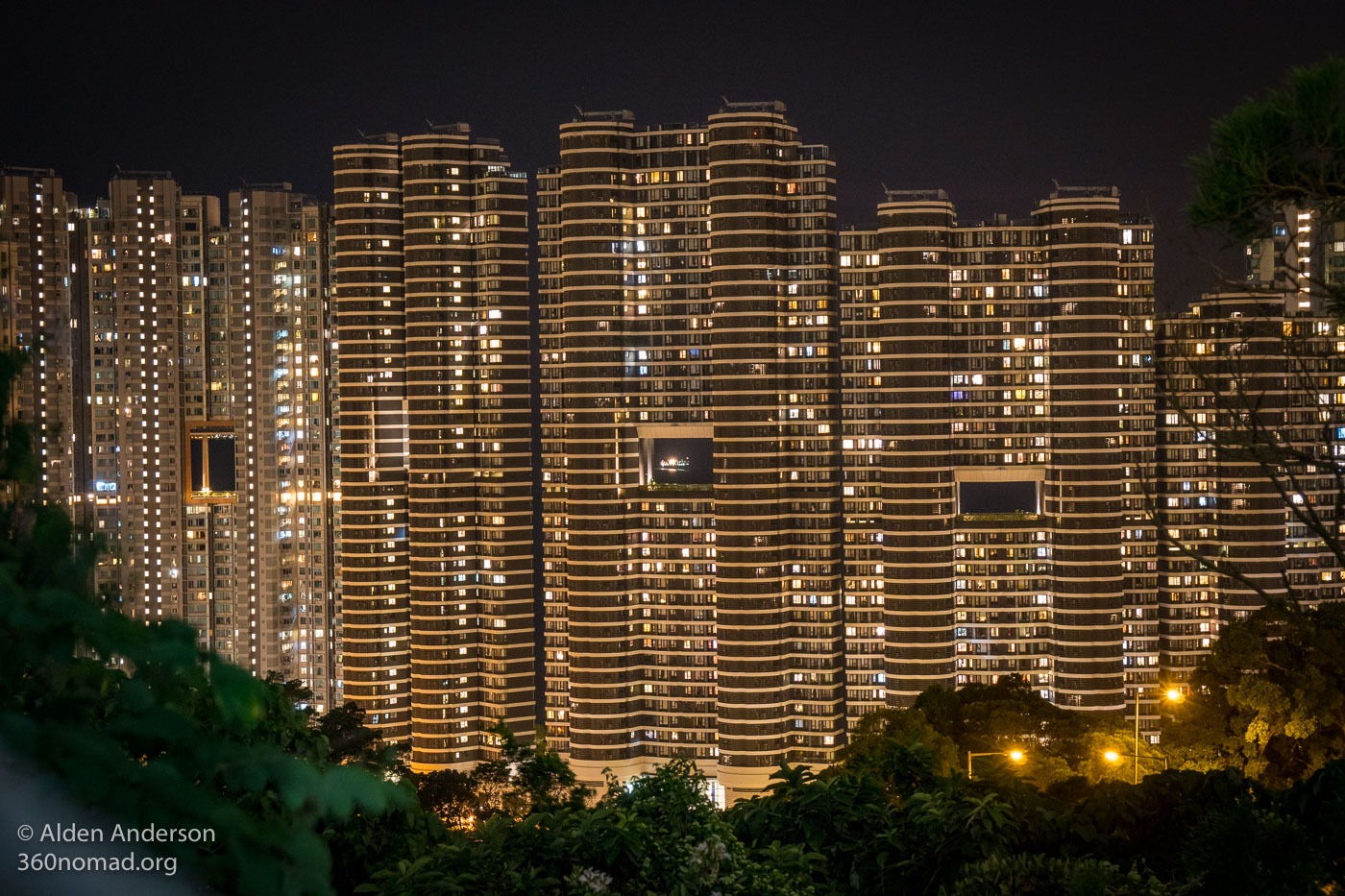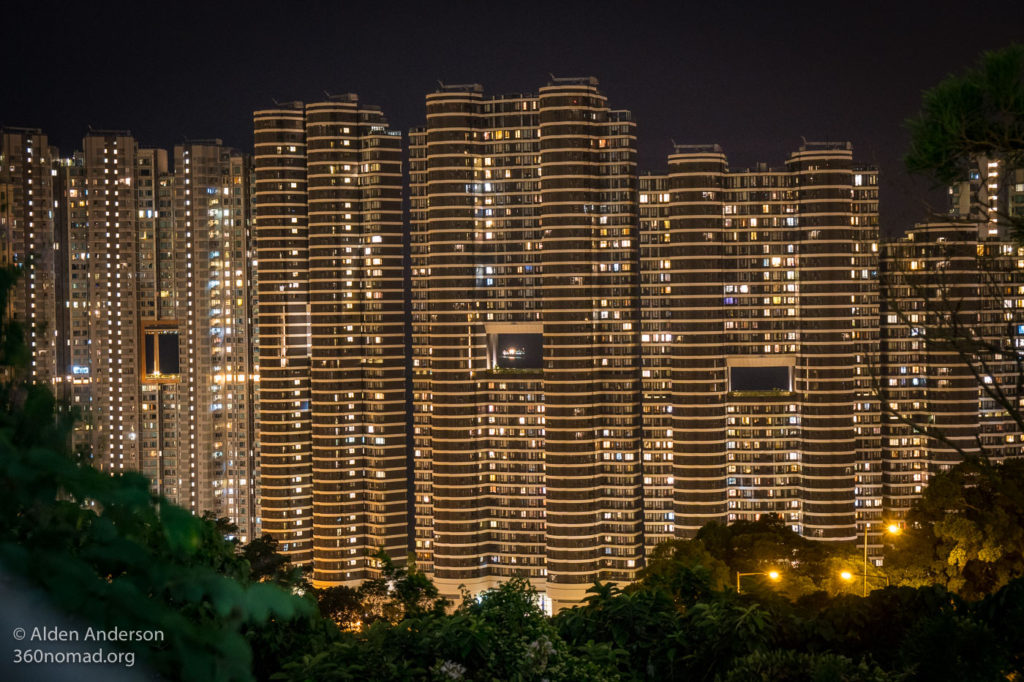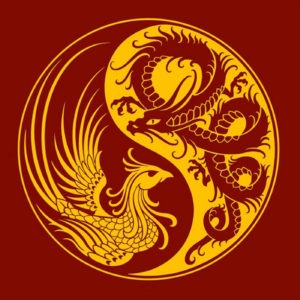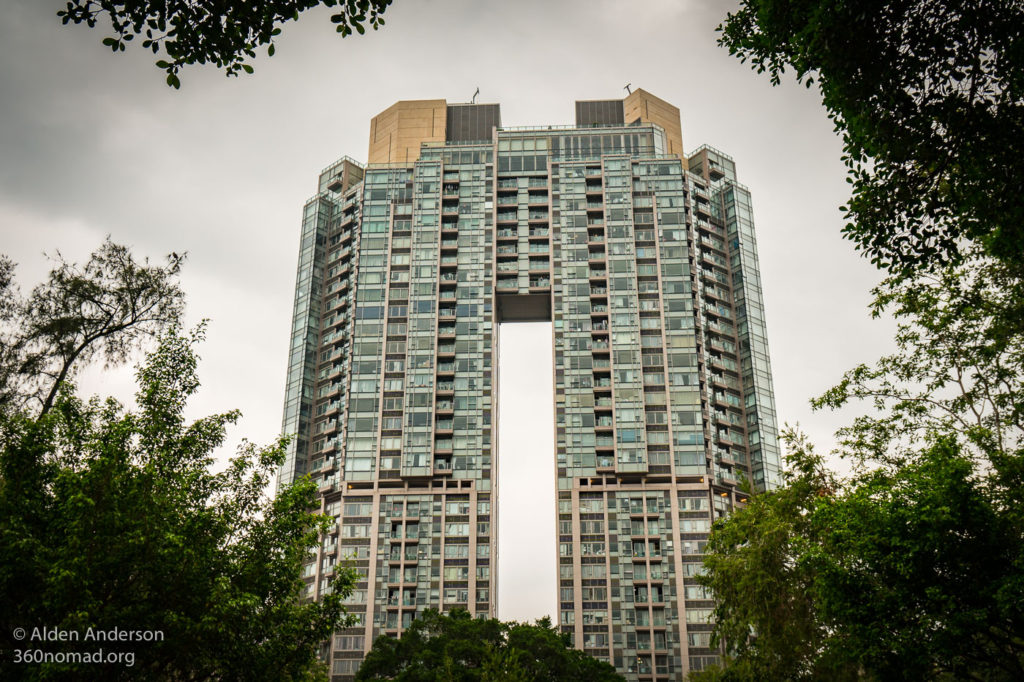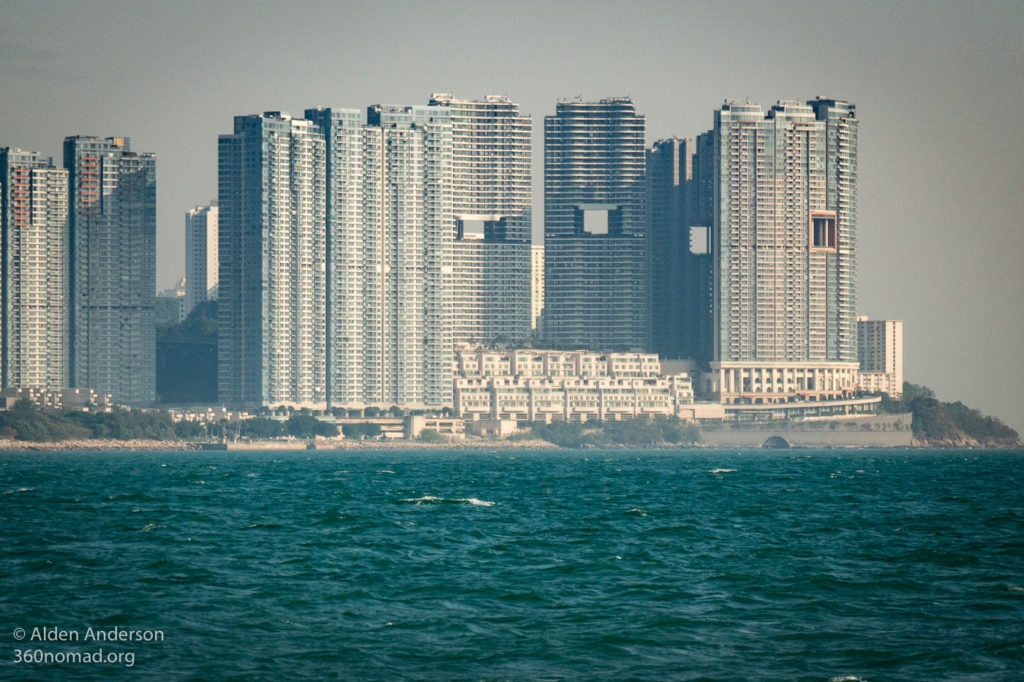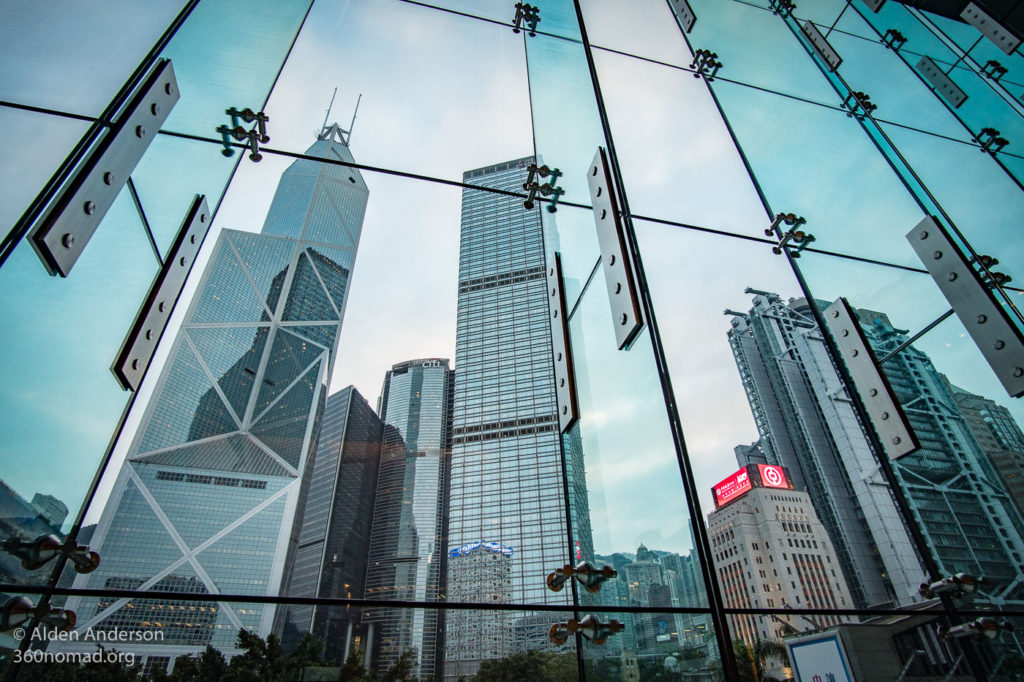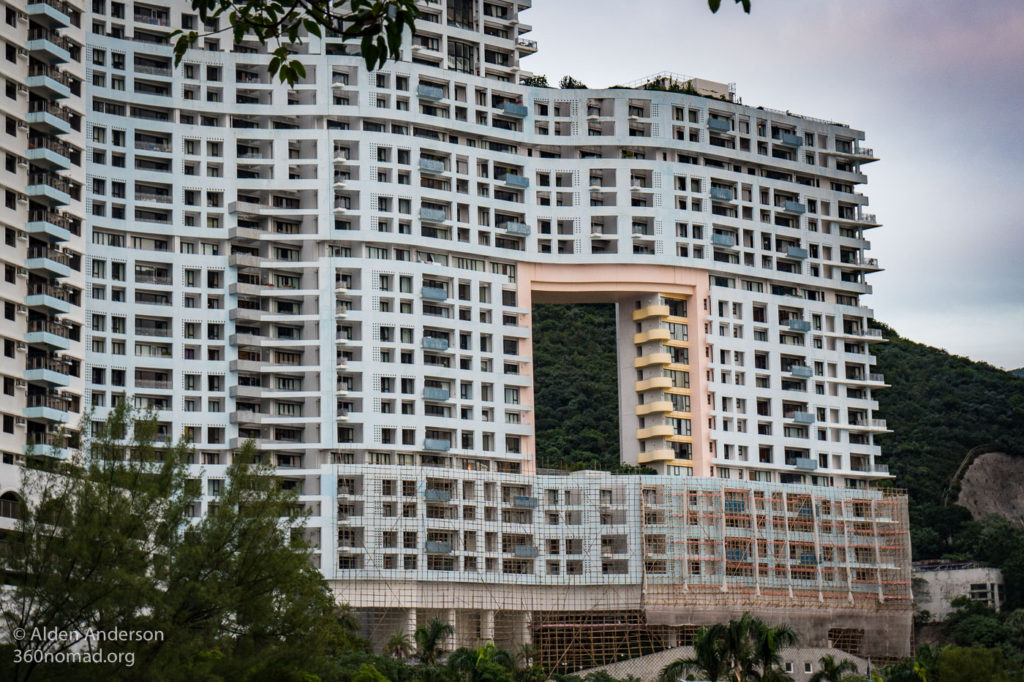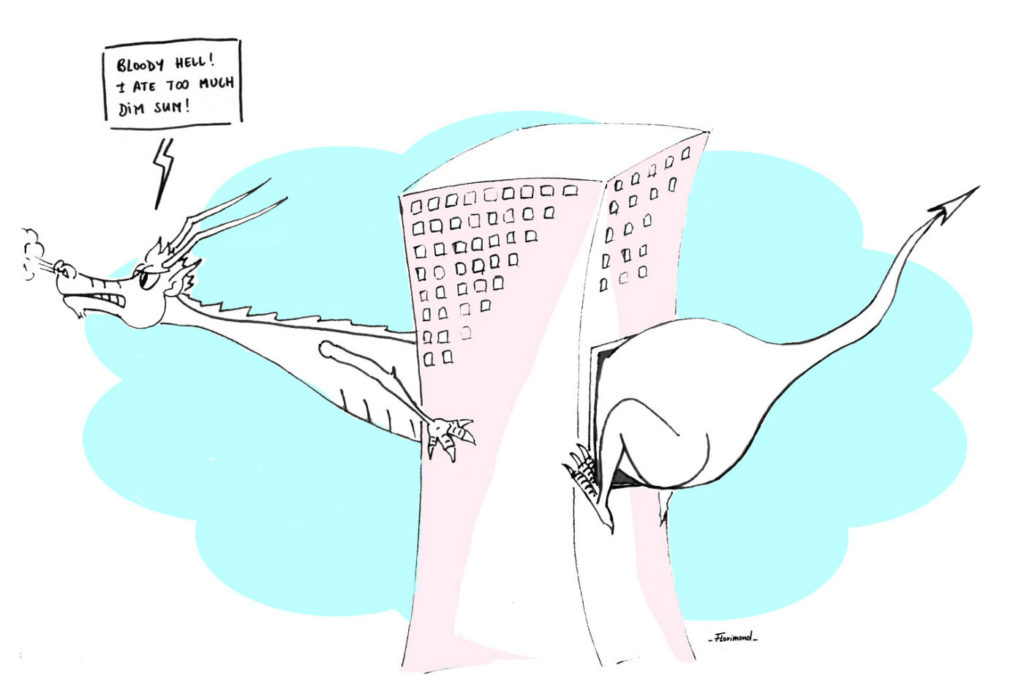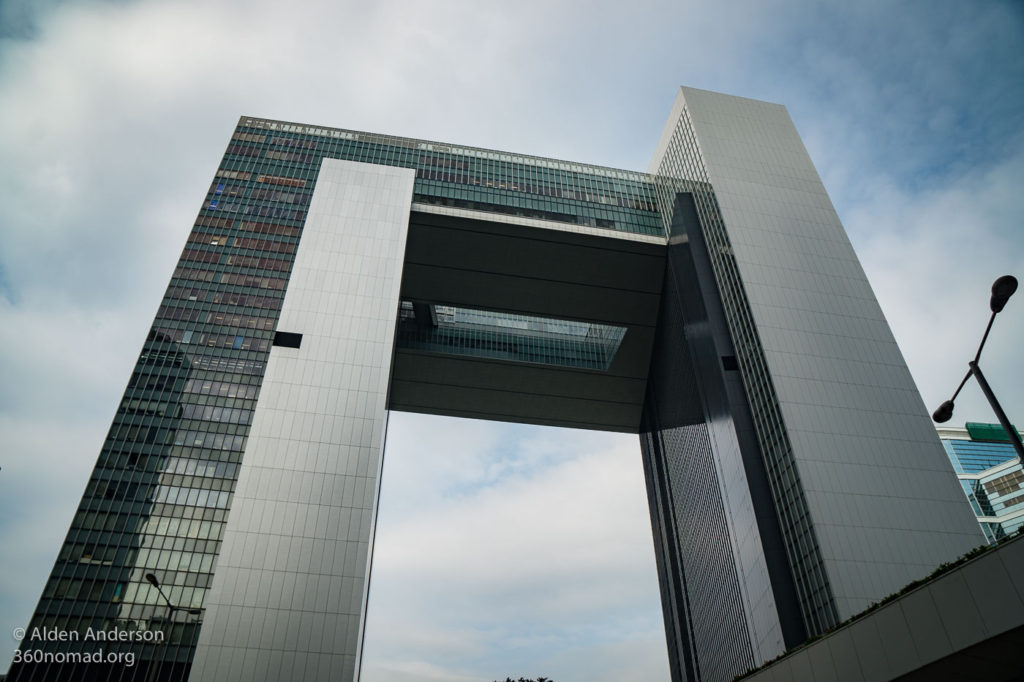A glance around Hong Kong and you might notice odd holes in the middle of its skyscrapers. An unusual and unique feature of this city. Why build gaps into a building in a city with some of the highest real estate prices in the world? The answer lies in dragons and the principles of Feng Shui.
Chinese Dragons:
The dragons of Chinese culture are distinctly different from their Western counterparts. In the physical form its long (which incidentally means “Dragon” in Chinese) wingless, serpentine body swims through the air like a snake in the water. They aren’t monsters to be battled but auspicious creatures with knowledge and power, to be respected. They control the weather and rain and like the weather can be quite temperamental, in fact, the Chinese word for “tornado” is “Lóng juǎn fēng” which means “Dragon Twisting Wind”.
Dragons represent the masculine, the Yang, bright and solar, balancing the feminine Yin, represented by a Phoenix, dark and lunar. It’s the ancient Chinese Philosophy of Taoism (Tao = The Way). Taoism posits the idea of a life energy called “Qi” ( Chi ) flowing through every living thing. Chi is also believed to flow through underground rivers and streams and it’s a common custom in China to locate these streams of Chi and construct buildings around them without interrupting their flow. Dragon’s breath is the Chi of the Universe.
These aren’t the Smaugs or the fire breathers to be slain before rescuing a maiden, and they do not respond to “Dracarys” before roasting an army. In fact, they are rarely if ever portrayed as fire-breathing. Instead, they are closely associated with water, in addition to the weather. Dragons are powerful, water-loving, Chi breathing creatures to be revered.
Gates for Dragons:
Dwelling in the mountains above Hong Kong these Chi breathers fly down to the waters of Victoria Harbor every day. But what happens when a line of skyscrapers blocks their path, deflecting the dragons on their daily journey? Well, you build holes, gaps into the building, gates for dragons.
Something about the concept of dragons descending the rocky forested peaks of Hong Kong to the ocean every day just fascinates me. In Feng Shui dragons are encouraged to fly through the buildings thus bringing Chi, wealth and prosperity to the people and businesses within. It’s not some passive belief for the architects and developers of Hong Kong, the people who spend (and lose) countless millions of dollars leaving empty gaps in buildings in a city with some of the highest real estate prices in the world.
Feng Shui:
Literally translated into English it means “Wind Water”, Feng Shui is the Philosophy and art of arranging items in accordance with the Chi all around us. To maximize the Chi so as to be wealthy, successful and happy, to be in alignment with the energy of the universe.
Where do you build a building so as not to block the natural Chi flowing through the underground rivers? How does one arrange his furniture so as to achieve a good flow of Chi throughout your living environment? These are questions answered by the principles of Feng Shui.
HSBC Building and the battle of Feng Shui
When construction was finished on Hong Kong’s HSBC building in 1985 at HK$5.2 billion, (roughly US $668 million or 1.5 billion USD today), it was the most expensive building ever constructed in the world, owing in part to the Feng Shui principles it adhered to.
I.M Pei and Partners mostly ignored the principles of Feng Shui when they designed the nearby Bank of China Tower with its distinctive knife-like edges, the first major building in Hong Kong not adhering to these principles of Chi. Its screwdriver like shape is believed by some to be “Drilling the wealth out of Hong Kong”. The building has been blamed for a number of tragedies including bankruptcy and a bad fall by Margaret Thatcher.
HSBC’s answer was the installation of Feng Shui “Cannons” on top of the building. Two crane-like structures directed at the Bank of China Tower, deflecting the bad energy.
Prime real estate, for Dragons:
A city where the cheapest hostel on the weekend is still over US $30 for a small dorm bed, a bed in a sardine room shared by 5 other people, a room with someone’s inescapable funky foot odor, a bed you must share with your luggage as there’s just no other place to put it.
This is Hong Kong, a high-rise city with neighborhoods like Mong Kok, one of the highest population densities in the world. Take a stroll through Ikea and you’ll see compact — everything. Bathrooms, living rooms, and bedrooms; compact. They know their audience. Every square foot counts here. A normal HK bathroom has a shower head over the toilet, there’s no tub. (One learns quickly that you’d better move the TP before turning on the water.)
Think about this then; Dragon Holes! Huge empty gaps in the otherwise densely built skyscraper, to allow dragons to pass through on their daily journey down to the ocean. No these people aren’t the Christmas-and-Easter Christians of the Feng Shui world. They’re all in.
And so my journey began; looking for the Dragon Holes of Hong Kong.

